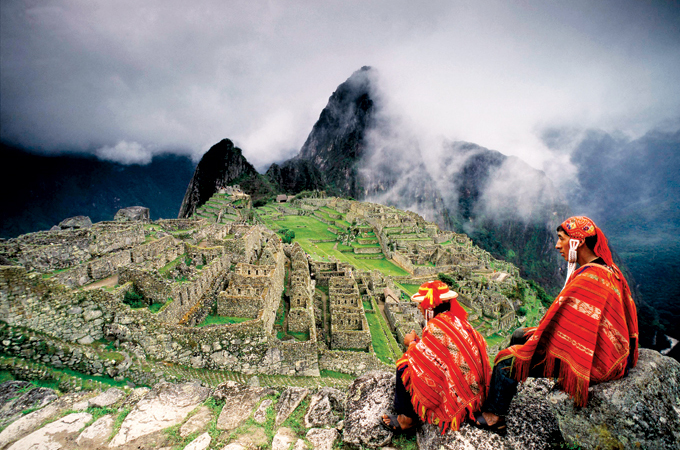
The Andean nation of Peru has seen its tourism numbers grow exponentially over the last decade – from a mere 828,000 tourists in 2000 to nearly four million tourists in 2015.
The Peruvian Foreign Affairs Ministry has waived tourist and business visitor visa requirement for incoming Indian nationals holding a visa for at least six months or a permanent resident status in the United States, Canada, the United Kingdom, Australia or any Schengen State. Indian nationals can enter Peru visa free for a stay of up to 180 days, either for a continuous visit or several consecutive visits, within a 12-month period.
The reciprocal measure follows on India's decision to liberalise tourist and business visa regime for Peruvians, TTN has learnt in a one to one talk with Carlos Tavera, consul general of Peru to Dubai.
“This is really good news for us because we want more tourists from India. Figures from 2015 say that we had 6,000 Indian passport holders visiting Peru, making it our 23rd source country. So, only 6,000 tourists from a country of a billion people and a huge and growing middle class that wants to explore, travel and spend.
“India has grown so fast, the spending power of the people has improved and Indians are becoming more adventurous. We also have a lot in common with India, we are big countries with diverse offerings, and we both are ancient civilisations.”
With this visa-free proposition, a lot of increase from Indian visitors is expected, though the consul general declined to project the amount of increase, he added, “In our Dubai consular office, which is Peru’s most important outpost in the Middle East, we have been experiencing a 20 per cent increase in visa issuance year on year. The biggest chunk of these travellers to Peru comprise of Indians.”
With this move, the Inca nation proves its openness to foreign tourism, investments, trade, capital and technology, after having signed a similar deal with China last year. In 2015, close to 20,000 Chinese tourists entered Peru. The country expects to raise this number to 50,000 by close of 2017 and with the visa exemption, it does not look like a very hard target to achieve.
Premium tourist inflow grew 17 per cent in 2015 with respect to the previous year, according to Peru's Exports and Tourism Promotion Board (PromPeru) 2015 Foreign Visitor Profile (PTE). The PTE is an annual study that monitors foreign tourists' characteristics, motivations and behaviour in Peru.
The premium segment comprises foreign travellers, who come into the Inca nation via Lima's Jorge Chavez International Airport. They acquire tourism packages and spend at least $1,000 during their trip. A total of 525,227 such luxury visitors were recorded in 2015, accounting for 16 per cent of international arrivals last year.
The majority of tourists come from the United States (34 per cent); followed by France, Japan, Canada and Spain (5 per cent); as well as the United Kingdom, Australia and Germany (4 per cent).
Regarding average expenditure, highest spending was recorded by Asian tourists close to $2,000, and visitors who acquired a holiday package invested the most in their trip $2,078 on average.
With respect to accommodation, 18 per cent chose four- and five-star hotels, whereas 41 per cent preferred three-star options and 48 per cent went for one and two-star hotels. Luxury accommodation (four and five-star hotels) was favoured mainly by Asian (48 per cent) and UK (36 per cent) visitors.
In recent years, Peru has established itself as one of the world’s most interesting and unique tourism destinations. Much of the sector’s growth has rested on the Incan ruins of Machu Picchu, a globally recognisable historical site. But to accelerate expansion over the coming years, tourism authorities and the private sector are simultaneously increasing promotional efforts and developing the country’s touristic products.
Peru’s long history, nature, culture and unique cuisine are critical selling points for future development in the tourism industry. An inflow of private capital into the growing hospitality offer is significantly raising the sector’s profile.
A native of capital city Lima, Tavera outlines a typical itinerary for Peru. “Lima used to be considered just a passing point to Cusco, but now it is a destination in its own right with food and culture worth exploring. Lima represents an eclectic fusion of culture from all the regions of country and the colonial heritage of the city mixes beautifully with the modern spaces. For an eight-day trip, spend at least two days in Lima.
“Then go to the south of the country to Arequipa, second city of Peru for another couple of days, and then to Cusco and Machu Picchu. If you have more time, go to Puno, which is on the shore of the highest navigable lake in the world – Lake Titicaca or go to the Amazon jungle in the north of Peru. You need at least 8 to 10 days to explore the country.”
There are also some interesting luxury experiences in Peru, for instance the Orient Express train to Titicaca and the Belmond Hiram Bingham to Machu Picchu. “Every city has special hotels. In Cusco, for instance, they have turned monasteries into luxury hotels. There are also special cruises – top of the line - in the Amazon river, where you can stay for five days, visiting jungles and its aboriginal communities,” Tavera teases us.
